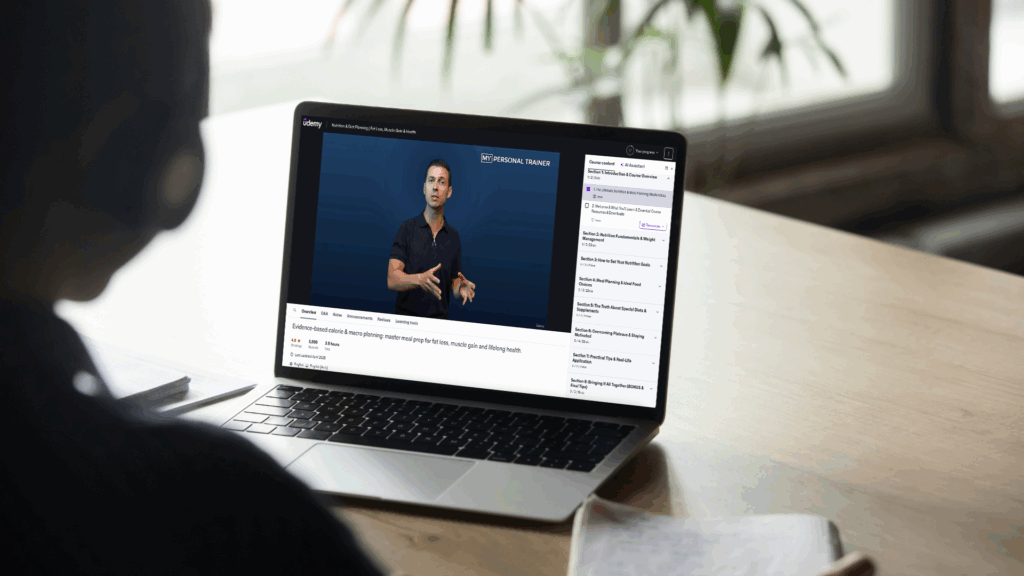Introduction
Do you dream of turning your love for fitness into a real job? Launching a personal trainer career is more than possible—it’s one of the most rewarding paths you can take. In this guide, you’ll learn how to start strong, avoid common mistakes, and build a future where your passion pays the bills.
Why Becoming a Personal Trainer Matters
Being a personal trainer is about more than just working out. It’s about helping others transform their health and confidence. In a world where more people are struggling with fitness and motivation, certified personal trainers are needed now more than ever.
A personal trainer career gives you freedom. You can choose your own schedule, be your own boss, and make a real difference in people’s lives. Plus, the fitness industry keeps growing, with more clients looking for guidance online and in person.
Step 1: Know Yourself and Set Clear Goals
Before you begin, it’s important to reflect. Ask yourself: Why do I want to become a personal trainer? Is it to escape a boring 9-to-5? Do you want more control over your time? Or do you just love helping people feel stronger and healthier?
Start by writing down your personal goals. Maybe you want to:
- Earn extra income while keeping your day job.
- Transition into full-time training within a year.
- Build a strong online fitness brand.
Be honest about your strengths and areas you need to improve. Some people love talking and connecting, while others prefer working quietly. Both can succeed—as long as they stay true to themselves.
Step 2: Learn the Science and Get Certified

To build a real personal trainer career, you’ll need the right education. That starts with a quality certification. Don’t worry—it doesn’t mean going back to school for years. Many respected programs can be completed in a few months.
What You’ll Learn in a Certification Program:
- How muscles grow and recover
- How to design workout plans for different goals
- Basic nutrition principles
- How to train people safely
Scientific research shows that trainers who understand human anatomy and movement are more trusted by clients and get better results. A strong education helps you stand out in a crowded field.
Popular Certification Programs (in Europe and beyond):
- NASM (National Academy of Sports Medicine)
- PFA Academy
- ACE (American Council on Exercise)
- ISSA (International Sports Sciences Association)
Choose one that fits your learning style and budget. After that, keep learning—new methods, research, and trends appear every year.
Step 3: Build Your Business Step by Step
Once you’re certified, it’s time to build your brand and get clients. You don’t need a big gym or expensive equipment to start. Many personal trainers begin by training friends, offering online sessions, or meeting clients in local parks.
Actionable Strategies to Launch Your Personal Trainer Career:
- Start with people you know: Offer free or low-cost sessions to gain testimonials and build confidence.
- Post helpful content: Share fitness tips, workouts, or client success stories on social media.
- Offer a clear service: Define your niche. Are you helping busy moms lose weight? Office workers with back pain? Athletes?
- Set your prices smartly: Don’t undervalue your work, but also offer intro sessions or packages to attract new clients.
- Get a simple website: List your services, contact info, and success stories.
You don’t need to be perfect—you just need to take the first step. Small actions every day will lead to big changes over time.
Tips for Beginners
Starting out can feel overwhelming. But remember, every top trainer was once a beginner. Focus on progress, not perfection.
Here’s how to make it easier:
- Start with 1–2 clients and give them your full attention.
- Ask for honest feedback to improve.
- Celebrate small wins—every happy client is a step forward.
- Don’t compare yourself to others. Everyone’s journey is different.
Common Mistakes to Avoid

It’s easy to make mistakes early in your personal trainer career, but with the right mindset, you can avoid the most common ones.
Watch out for these pitfalls:
- ❌ Taking every client without checking if you’re the right fit
- ❌ Not setting clear rules or cancellation policies
- ❌ Focusing only on workouts and forgetting about mindset and lifestyle
- ❌ Undercharging or giving too much away for free
- ❌ Skipping your own workouts and burning out
Be kind to yourself. You’ll learn as you go—but learning from others’ mistakes will save you time and stress.
Tools, Resources, and Daily Routines
Success comes from systems. The right tools and habits can make your work easier and your results stronger.
Helpful Tools:
- Trainerize or My PT Hub – for workout plans and tracking
- Canva – to create simple workout visuals or social media posts
- Google Calendar – to manage your time and client sessions
- Zoom or Google Meet – for online coaching sessions
Daily Routine Ideas:
- 30 minutes of personal development (read, podcast, or course)
- Check in with clients via message or email
- Post one helpful tip on social media
- Review client progress and adjust plans if needed
- Stay active—walk, stretch, train
Conclusion
Starting a personal trainer career doesn’t have to be hard. With the right mindset, a strong plan, and steady action, you can turn your passion into your profession. Remember: it all starts with self-reflection, solid education, and consistent action. Keep learning, keep showing up, and your dream job can become your reality.
👉 Call to Action
Ready to launch your career and earn real income with fitness?
👉 Join the Personal Trainer Masterclass: Financial Freedom for Personal Trainers – Your Success Plan and get the tools to grow fast and smart.

FAQ – Personal Trainer Career
1. Do I need a degree to become a personal trainer?
No, you don’t need a degree. A certification from a recognized organization is enough to get started.
2. How much can I earn as a personal trainer?
It depends on your location, services, and marketing—but many trainers earn between €30,000 and €100,000 per year or more with smart strategies.
3. Can I work as a personal trainer part-time?
Yes! Many trainers start part-time while keeping another job. You can build up as you grow your client base.
4. How do I find my first clients?
Start with friends, family, and coworkers. Offer short-term packages or free trials in exchange for testimonials and referrals.
5. What’s the best niche for new personal trainers?
Choose a niche you understand and care about—such as beginners, weight loss, seniors, or busy professionals. A focused niche helps you stand out.

Leave a Reply